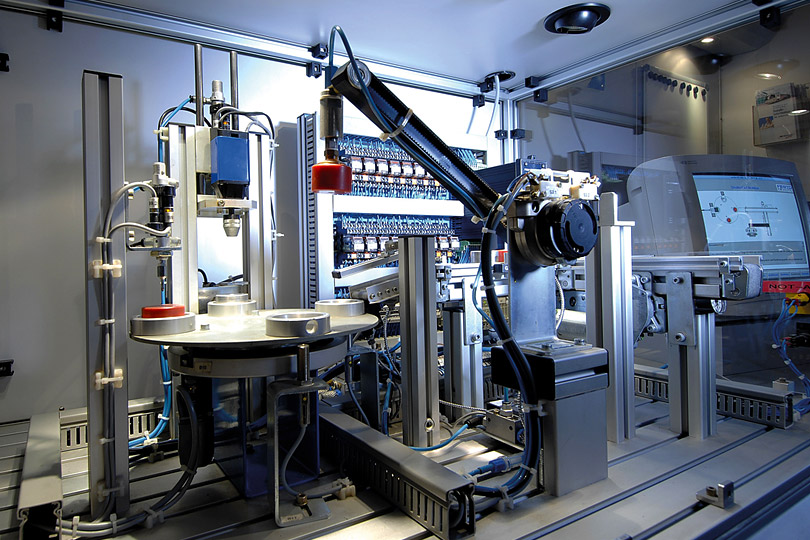In today's globalised marketplace, manufacturers need to intensify their usage of technology to improve productivity levels, stay ahead of the competition and ultimately ensure sustainable growth.

Need for Automation
Automation technology and software represent one way for manufacturing firms to leverage on the latest technological advances to improve their business results and bottom line.
New developments in precision machinery, mechanical systems and robotics, integrated with the latest automation software systems are pushing the automation markets to greater heights. While their upfront investment is great, the comparative advantages these automation technologies offer are also many, including increasing production speed, reducing manufacturing issues, promoting waste reduction, improving cost efficiency and overall greater ease in production monitoring and management.
Outlook for Growth
According to the International Monetary Fund (IMF), the global economy is set to grow 3.3 per cent in 2014 and 3.8 per cent in 2015. The pace of growth will be uneven across countries though. While the United States is experiencing a major industrial revitalisation, boosted by economic resurgence from the North American shale gas boom, other major economies such as China, India and Japan will have to contend with growth, tempered by the challenges of structural reforms.
Looking forward, the outlook for the automation technology market is a bright one. According to Frost & Sullivan’s 2013 Automation Market Factbook, the global automation market will see strong demand as a result of rising industrial capital investment, global competitive pressures, declining workforce, and the increasing convergence between operational technologies and IT systems.
Another report from Markets and Markets is projecting the Industrial Controls and Factory Automation market to reach US$301.9 billion by 2020, from US$171.2 billion in 2013, with a CAGR of 8.53 per cent. In particular, the industry is expected to grow well in the emerging economies of Asia Pacific. This is largely attributed to the relatively low penetration rate of industrial automation in some countries at the moment, leaving space for faster growth.
Internet of Everything
One emerging technological trend that is expected to shake up the industry is the Internet of Things (IoT). IoT is a computing concept, describing a future in which objects and devices can be connected wirelessly to the Internet, identify themselves to each other and transmit information through these connections. And while IoT has the potential to impact many industries, it is set to revolutionise the automation sector in particular.
What IoT represents is a paradigm shift, allowing industrial automation systems to become responsive and intelligent. For example, manufacturers would be able to delve into the interaction data between components, making adjustments instantaneously to improve production. Some German industry leaders are already calling IoT the fourth industrial revolution, poised to trigger a wave of technological change that will lead to better ways of doing things and greater quality and productivity in industrial operations.
Restructuring Singapore
In recent years, Singapore has been embarking on a phase of economic restructuring, with the intent to position the country for better quality and more sustainable growth. Improving the productivity levels of businesses will be critical, with the Government having set the ambitious target of 2 to 3 per cent in productivity growth till 2020.
Manufacturing remains a key pillar for Singapore's economy, but companies in the sector here have had to contend with a rising cost base and manpower shortage in recent years. These issues have severely impacted companies across the entire manufacturing spectrum, from foreign multinationals to local Small and Medium Enterprises (SMEs), from makers of advanced electronic components to manufacturers of consumer food products.
Technology Adoption
The Singapore government has been strongly encouraging manufacturers to embrace automation technology as a means to increase productivity and overcome manpower and resource constraints. To support companies in adopting automation technology and other productivity measures, it introduced the well-received Productivity and Innovation Credit (PIC) scheme, which partially subsidises capital investment through cash or tax breaks.
Meanwhile, public sector research institutions such as the Singapore Institute of Manufacturing Technology (SIMTech) under the Agency for Science Technology and Research (A*Star) are helping manufacturers here adopt new technologies to improve their productivity.
Speaking at the Manufacturing Solutions Expo in October 2014, Second Minister for Trade and Industry S Iswaran noted that since its launch in 2013, A*Star’s Technology Adoption Programme (TAP) has helped to commercialise 12 technology solutions that have benefited a total of about 650 companies. One such solution is an analogue dial gauge webcam-based smart reader. This device allows companies to automatically capture data and generate reports, thus eliminating the need for manual processing and improving productivity.
Faster Pace of Growth
The automation technology and software industry is set to grow at a faster pace in the years ahead. Besides riding on the global economic recovery, there are also many potential factors that can help to accelerate the sector’s growth, including technological breakthroughs such as the IoT.